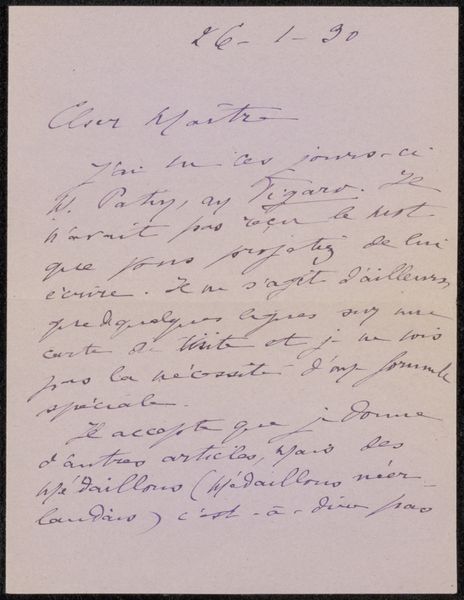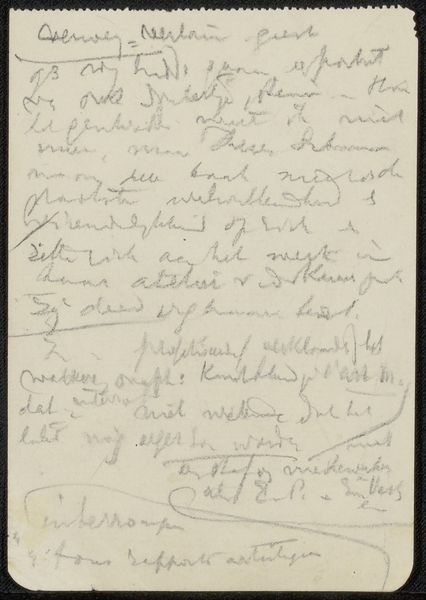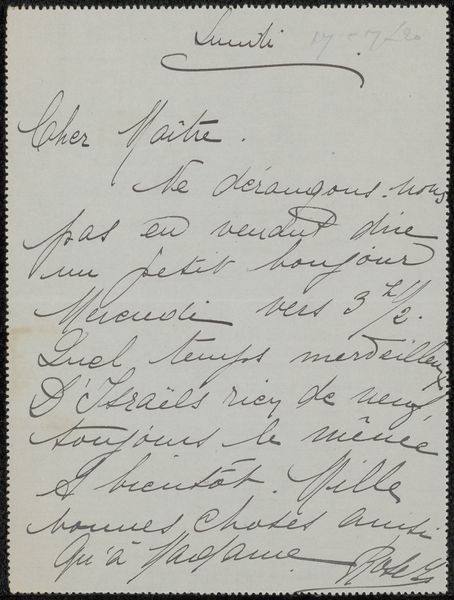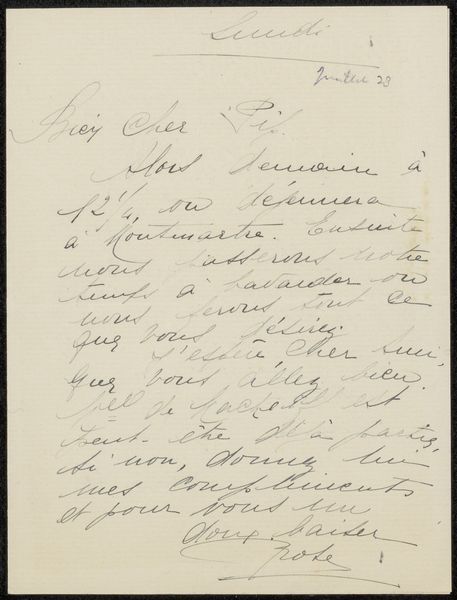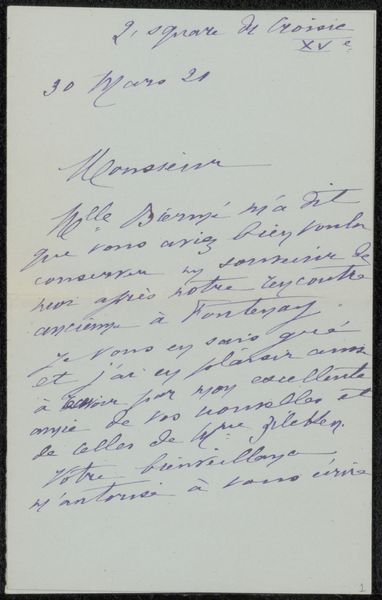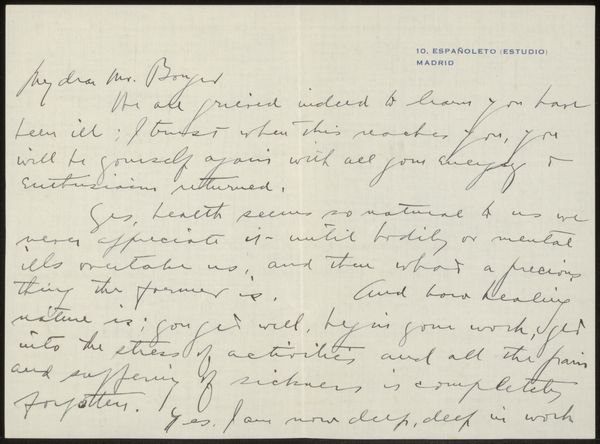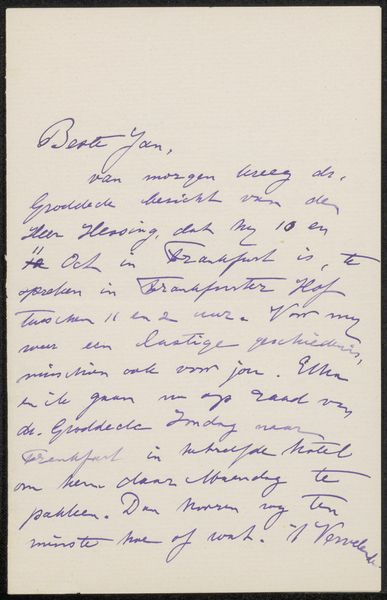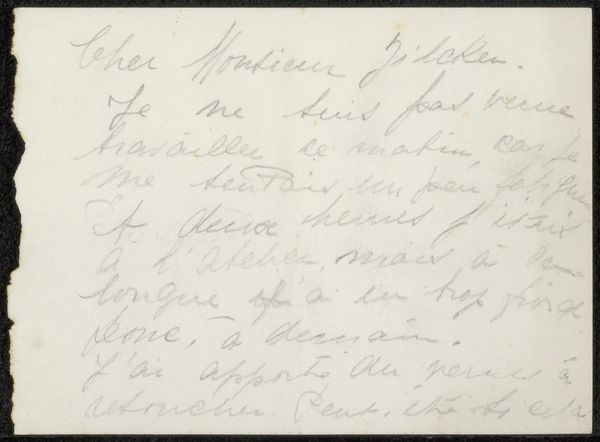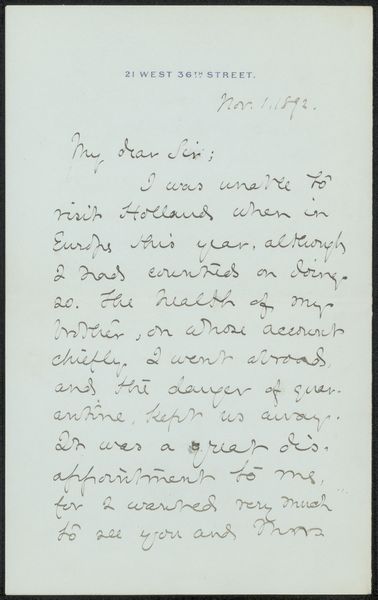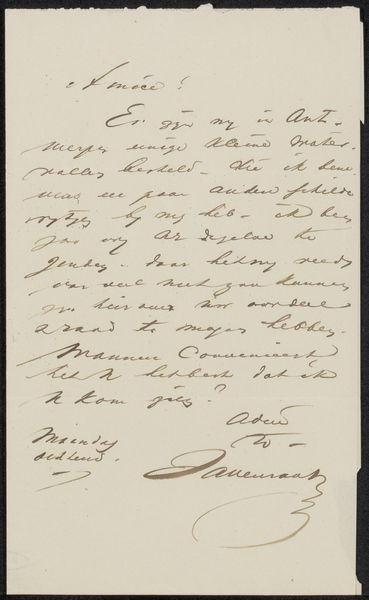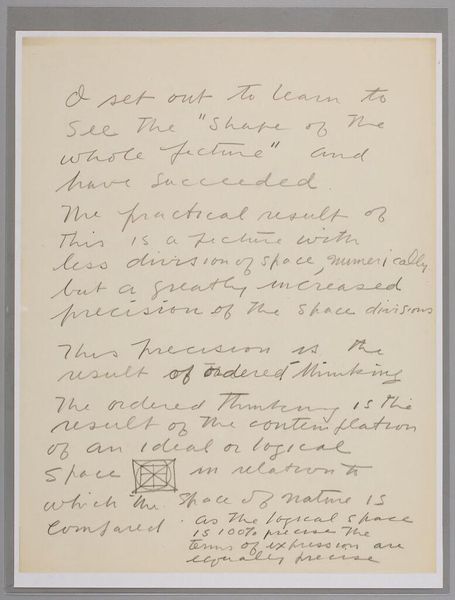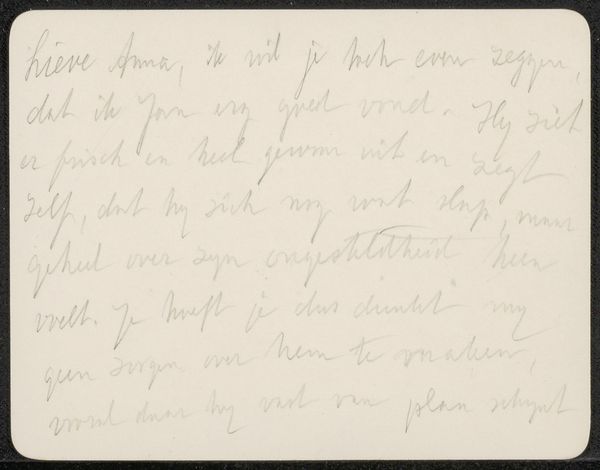
drawing, paper, ink, pen
#
portrait
#
drawing
#
script typography
#
paper
#
ink
#
pen
#
calligraphy
Copyright: Rijks Museum: Open Domain
Editor: We’re looking at "Brief aan Philip Zilcken," a letter dating from after 1904, created by Elizabeth Williams Champney using pen and ink on paper. The script gives off such a formal, almost solemn vibe. How do you interpret the meaning behind what we're seeing? Curator: What's striking here is the materiality itself. This isn’t just text; it’s a hand-written letter, which, by the early 20th century, was taking on a specific cultural weight as faster forms of communication emerged. A handwritten letter signaled care, intimacy. "96 Fifth Avenue" is printed at the top. What do you think of the address included? Editor: Interesting - I would have assumed that this letter comes from that address! Perhaps the author wants the recipient to know their societal standing? Curator: Precisely. Think about the power dynamics inherent in written correspondence at the time. The Champney is publicly performing a certain social role, condoling with Zilcken. The handwriting becomes a stage for enacting this role. But the mention of loss and that they had no previous acquaintance is curious - why do you think that the address of the Champney is shown so openly on the letter? Editor: That's insightful. It highlights the constructed nature of social interaction. Maybe she wanted to appear supportive? Curator: Absolutely. The visual form of the letter works to produce and perform her intended emotion. And what happens when we look at this now, divorced from that social context? Does it still have the intended meaning, and the address now has the reverse affect - one that removes her humanity by seeing her as just a societal placeholder in New York? Editor: This has changed how I see even mundane written things. Thanks! Curator: Me too!
Comments
No comments
Be the first to comment and join the conversation on the ultimate creative platform.
